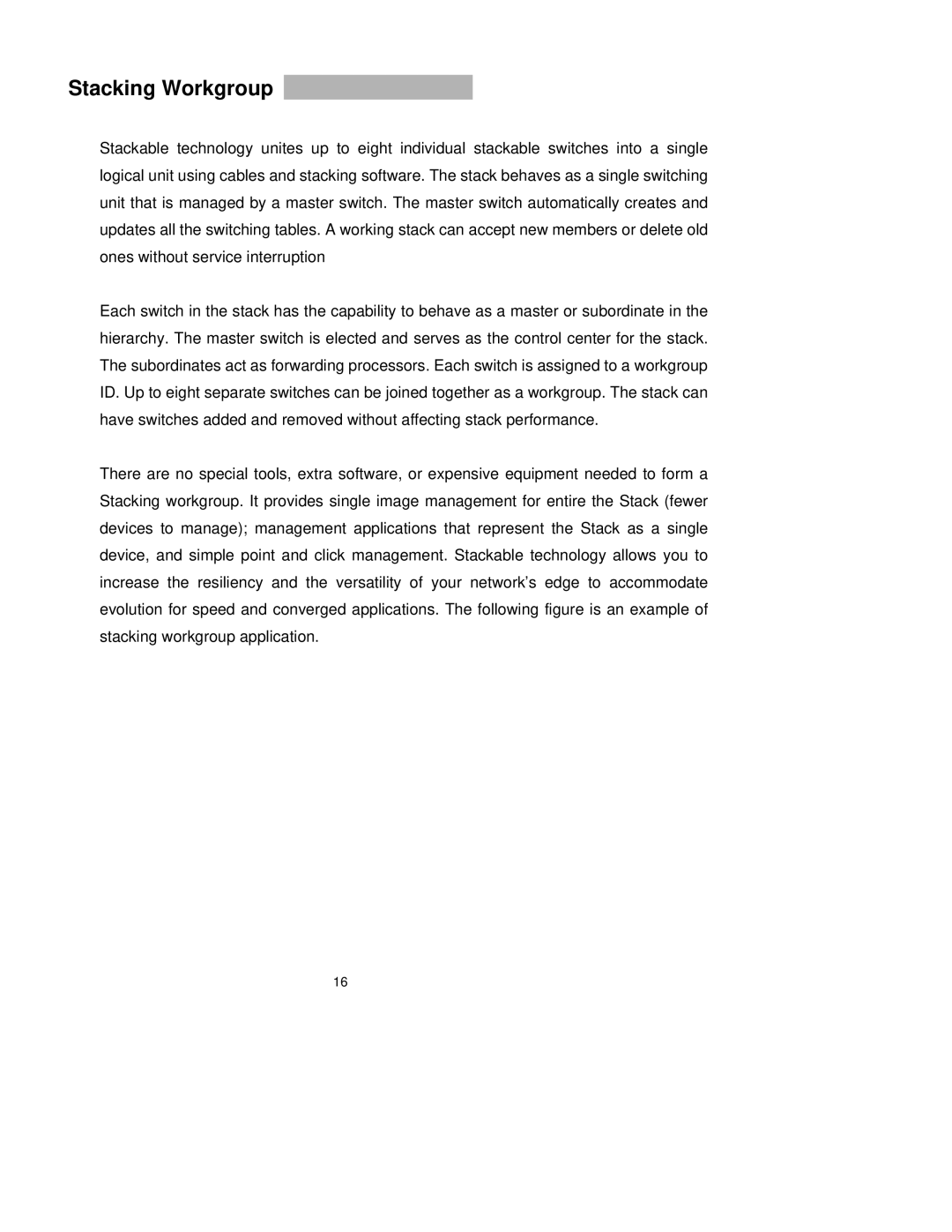Stacking Workgroup 
Stackable technology unites up to eight individual stackable switches into a single logical unit using cables and stacking software. The stack behaves as a single switching unit that is managed by a master switch. The master switch automatically creates and updates all the switching tables. A working stack can accept new members or delete old ones without service interruption
Each switch in the stack has the capability to behave as a master or subordinate in the hierarchy. The master switch is elected and serves as the control center for the stack. The subordinates act as forwarding processors. Each switch is assigned to a workgroup ID. Up to eight separate switches can be joined together as a workgroup. The stack can have switches added and removed without affecting stack performance.
There are no special tools, extra software, or expensive equipment needed to form a Stacking workgroup. It provides single image management for entire the Stack (fewer devices to manage); management applications that represent the Stack as a single device, and simple point and click management. Stackable technology allows you to increase the resiliency and the versatility of your network’s edge to accommodate evolution for speed and converged applications. The following figure is an example of stacking workgroup application.
16
